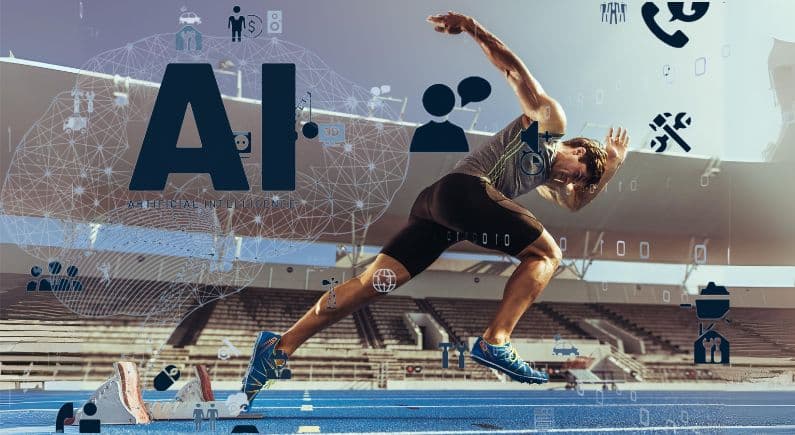[BLOCK] The new Turing game

Exploring a second renaissance for AI
Steve Chao, chief of Turing Industries, gives an exclusive interview for the spring issue of Block magazine’s cover story.
We are possibly in the most difficult business climate since the great depression. As COVID-19 sweeps across the globe, Turing Industries is poised to kick off a new world of technological revolution. From the Tesla Giga Shanghai to the Turing semiconductor tera-fab, the east is quietly brewing the world’s next center of innovation.
What exactly is Turing Industries?
I founded the Turing brand back in 2015 and experimented with a consumer electronics project called Turing Phone. Having gone through almost three generations of the security-based device, I turned my attention towards the core underlying technology, that is the computational chips and software programs which enable it to be useful. When I say useful, I’m really referring to the artificial intelligence functions nowadays common amongst those components powering cameras, maps, music, video, and payments apps. The focus of Turing Industries has been exactly that and we’ve been working at the forefront of AI computing research ever since.
Picking the neuromorphic brain
Turing Industries has been working in the neuromorphic computing space since 2018. We believe the holy grail of achieving human brain-like neuromorphic computation lies within In-memory computing. That is to design a new inference architecture that emphasizes memory bandwidth and locality by moving less data faster and with much lower power. To achieve the best results in artificial intelligence, machine-learning engines must figure out the fastest inference with the lowest power possible. In-memory computing works by storing weights in a memory and getting a multiply-accumulate by accessing the memory with the neuron activations. This is essentially moving into the analog domain by utilising the memory cells for analog signals rather than digital ones in order to drive the power down. The inference then happens in the memory by taking digital data and turning it into analog values to drive the memories before it uses analog bit-line output to be converted back into a digital format. In short, it is a way of removing the data movement between the CPU and memory. Therefore, I called it Artificial Memory Intelligence (A.M.I.). Among the most exciting aspects of neuromorphic computing is the notion of speed advancement for both mobile and edge computing tasks, as well as the possibility of improving blockchain consensus algorithms. Some of the most promising research and development in neuromorphic computing involves redesign of semiconductor chips; prominent players such as IBM TrueNorth, Intel Loihi, and Manchester University’s SPiNNaker project have all experimented with a brain-like computing flow which defies the legacy von Neumann architecture. Turing’s approach to a non-von Neumann model is to focus on a non-volatile memory-based computation chip and integrating it with an ASIC processor to form a hybrid semiconductor chip.
Shanghai rising: China’s silicon coast
To achieve Artificial Memory Intelligence we plan to build a tera-fab producing non-volatile memory technologies for memory-based neuromorphic computing needs. The first country which came to mind was China; the country has been beefing up its semiconductor capabilities over the last decade or so. Turing Industries hand-picked a few regions in China before it landed in a special municipality, namely Shanghai. Shanghai, a city with a population just shy of 25 million, opened up to Turing Industries and we were brought to the attention of government officials managing the Shanghai Lin-gang Special Area within the Shanghai Pilot Free Trade Zone. The area is a well-established industrial zone with established semiconductor companies and the most famous recent addition to the area – the Tesla Giga Shanghai factory. The coastal Shanghai Pilot Free Trade Zone Lin-gang Special Area may be too long a name for the average person to remember, hence I coined the term “Silicon Coast” describing the area’s future advancement potential in semiconductors and investment opportunities.
Turing Industries has been working since late last year with the Silicon Coast (Shanghai Lin-gang Special Area) government officials on the preliminary planning for the new semiconductor tera-fab. The total investment will be US $12billion, with the project divided into two phases. Phase-I involves US$6billion investment. Turing Industries have already signed an agreement with the Silicon Coast with the government fronting a negotiated investment amount to cover a part of the phase-I investment. To us that’s a huge undertaking by the government, and goes to show their commitment to supporting the Turing tera-fab initiative. The remaining amount will be invested via a new investment fund also led by Turing Industries called the Turing Imagine Fund. Turing Imagine Fund is riding the same Silicon Coast wave by which the central Chinese government aims to transform Shanghai into a leading international finance center with key trials and projects taking place in the Shanghai Lin-gang Special Area. Turing Imagine Fund is in the process of negotiating a QFLP fund licence which will allow Turing to raise funds, with compliance, both internationally and domestically.
What will the tera-fab’s business model be?
At the heart of Turing SMX, (the name of the tera-fab), is production of non-volatile memory chips for Artificial Memory Intelligence inference programs and machines. While there is already fierce competition in the space, according to our estimate the rest of the tech world will be switching to memory-oriented neuromorphic computation within the next decade in response to lowering carbon footprint and more importantly to brace for an explosion of computational needs in the post-AI era. Turing SMX has already signed up partners that are in dire need of next generation non-volatile memory chips for their clients in the telecommunications, EV and even space industries. A typical fab would take at least 5 years before it sees profitability, however Turing SMX will go against the stream and break even by year one.
How do you see such ambitious projects lift-off amid the global financial crisis?
As Alan Turing put it, “We can only see a short distance ahead, but we can see plenty there that needs to be done.” I wouldn’t say it’s an ambitious project! I regard ambitious projects as those planning to leave our planet. All jokes aside, there is indeed a need for Turing Industries to play a part in the development of a true AI. We have seen the global market slump in the last and the same as in any war-time scenario, where mass psychological breakdown causes the market to crash. I’m not saying the current pandemic isn’t a severe one, what I really meant was that given the scientific capabilities of the era we live in, there will be a cure to both the outbreak of the disease as well as to the global economy. What we shouldn’t do is pause, but move forward as the project will lift off by itself if you plan it right. Lastly, If you have weathered the storm, you will conquer the world.
What does it all mean for the tech industry?
We now stand at the confluence of four great forces in technology: artificial intelligence, blockchain, memory-oriented semiconductors and high performance computation portable computing. These technologies, when taken together, form an inflection point in the development of not only technology but also what it means to be a part of the post-modern world. During the current global lockdowns people are forced to explore their alternate personas in the immersive virtual worlds, be they gaming, social networking, or streaming. We are also seeing a trend where distributed systems, based on blockchain technology are used by people to build virtual worlds where liberty is the basis of all interactions, whether among people, machines or a combination of the two. Turing’s quest in memory-oriented neuromorphic computation takes the non-Von Neumann computing architecture approach to advance the vast computation requirements for Artificial Memory Intelligence needed to form the foundation for the next digital revolution. Combining these great forces in the Silicon Coast may inspire a new wave of tech awakening.
Bridging Malta and Shanghai
Malta owns the world’s most advanced legal framework for AI and Blockchain and it was such that first attracted me to this innovation island. Malta’s national strategy on ethical and trustworthy AI is way ahead of every other nation in terms of its vision and determination to strive for victory in the post-AI era. I believe the framework already established by the Maltese government will serve as a guideline for the Shanghai Silicon Coast to adopt and perform trials followed by the regional government’s push for AI based innovations as well as advanced blockchain technologies. I also think that Malta and Shanghai can work closely together in the development of Artificial Memory Intelligence. Given Malta’s experienced legal framework in the area and teaming up with Shanghai’s push for advanced semiconductors, the possibilities are endless. I think Turing Industries is ready to help bridge the two.
About AIBC:
AIBC Summit is a global expo covering topics relating to the global sectors for blockchain, AI, Big Data, IoT, and Quantum technologies. The event includes conferences hosted by globally renowned speakers, workshops for industry learning and discussion, an exhibition space accommodating more than 400 brands and a number of networking events.






